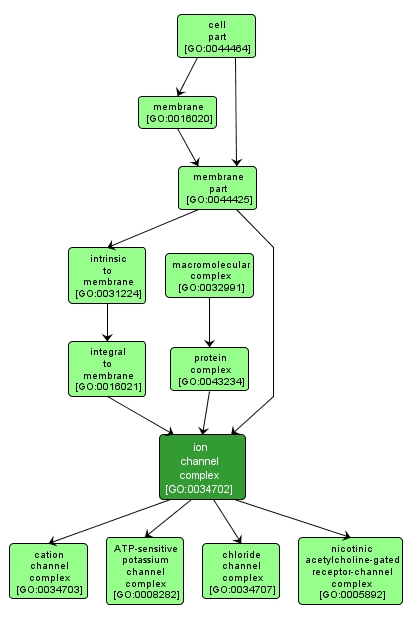GO TERM SUMMARY
|
| Name: |
ion channel complex |
| Acc: |
GO:0034702 |
| Aspect: |
Cellular Component |
| Desc: |
A protein complex that spans a membrane and forms a water-filled channel across the phospholipid bilayer allowing selective ion transport down its electrochemical gradient. |
|

|
INTERACTIVE GO GRAPH
|














